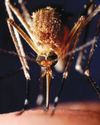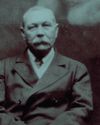Law enforcement agencies have started investigating unsolved crimes by combining DNA databases and family trees. But should ‘genetic genealogy’ really be used to crack cold cases?

From 1976 to 1986, the residents of California were terrorised by a masked man who raped at least 48 women and murdered a dozen people. His carefully planned attacks suggested military training, but after three decades, the East Area Rapist – also known as the Golden State Killer – seemed to have got away with his crimes. The case went cold.
Then on 25 April 2018, law enforcement officials announced that they had arrested Joseph DeAngelo, a 72-year-old Navy veteran and former cop. Investigators explained that semen samples from crime scenes had been used to produce the perpetrator’s DNA profile and search an online database for potential relatives. The list of matches was then used to build a family tree that led to DeAngelo.
While catching killers using ‘genetic genealogy’ might sound like an obvious idea, it is by no means straightforward. “Humans are really similar genetically: if I compared my genome to yours, we’d be 99.99 per cent identical,” says Prof Graham Coop, a population geneticist at the University of California, Davis. “But there are positions in DNA which are variable between individuals.”
TESTING METHODS
Modern genetic tests read the letters of DNA at a selection of positions across the human genome to generate a profile of genetic variants. These single-letter differences represent DNA regions that often vary among people, called ‘single nucleotide polymorphisms’ or SNPs (pronounced ‘snips’).
Personal genomics companies like 23andMe and Ancestry offer ‘direct-to-consumer’ DNA tests that read about 700,000 SNPs. Those variants generate a profile that claim to reveal your family history, ethnic background and susceptibility to disease.
This story is from the {{IssueName}} edition of {{MagazineName}}.
Start your 7-day Magzter GOLD free trial to access thousands of curated premium stories, and 9,000+ magazines and newspapers.
Already a subscriber ? Sign In
This story is from the {{IssueName}} edition of {{MagazineName}}.
Start your 7-day Magzter GOLD free trial to access thousands of curated premium stories, and 9,000+ magazines and newspapers.
Already a subscriber? Sign In

World's First Malaria Vaccine
The World Health Organization’s director-general hails ‘historic moment’ as mass immunisation of African children begins

Is River Pollution Putting The Species In Jeopardy Again?
Ten years ago, it was jubilantly announced that o ers had returned to every county in England. But is river pollution putting the species in jeopardy again?

The Big Burnout
Long hours, low pay and a lack of appreciation — among other things — can make for a stressful workplace and lead to burnout. It’s something we should all be concerned about, because over half of the workforce reports feeling it

Putting Nature To Rights
More countries are enshrining the right to a clean environment into law. So if a company or government is impinging upon that right, you could take them to court

Mega Spaceship: Is It Possible For China To Build A Kilometre-Long Spacecraft?
Buoyed on by its successful Moon missions, China has launched a five-year study to investigate the possibility of building the biggest-ever spacecraft

Are We Getting Happier?
Enjoying more good days than bad? Feel like that bounce in your step’s getting bigger? HELEN RUSSELL looks into whether we’re all feeling more cheery…

“Unless the Japanese got the US off their backs in the Pacific, they believed they would face complete destruction”
Eighty years ago Japan’s surprise raid on Pearl Harbor forced the US offthe fence and into the Second World War. Ellie Cawthorne is making a new HistoryExtra podcast series about the attack, and she spoke to Christopher Harding about the long roots of Japan’s disastrous decision

Your Mysterious Brain
Science has mapped the surface of Mars and translated the code for life. By comparison, we know next to nothing about what’s between our ears. Over the next few pages, we ask leading scientists to answer some of the most important questions about our brains…

Why Do We Fall In Love?
Is it companionship, procreation or something more? DR ANNA MACHIN reveals what makes us so willing to become targets for Cupid’s arrow

Detecting the dead
Following personal tragedy, the creator of that most rational of literary figures, Sherlock Holmes, developed an obsession with spiritualism. Fiona Snailham and Anna Maria Barry explore the supernatural interests of Sir Arthur Conan Doyle